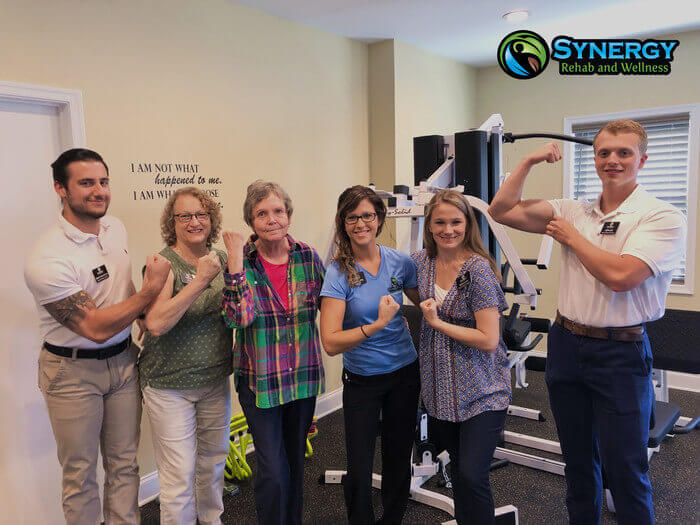When you see someone at work or in a difficult situation clutching his head, you may assume either that he’s under extreme stress, or that he has a headache. In fact, you may be right on both counts. Both physical and emotional stress can cause tension headaches; they can also trigger cervicogenic and migraine headaches, any of which can leave you effectively disabled.
You may struggle with chronic or recurring headache pain yourself — in which case, you’re probably tired of taking pain relievers all the time. Maybe it’s time you found a better answer by consulting our physical therapist. Physical therapy can ease your headache symptoms by treating their underlying causes, giving you a safer, more sustainable headache management strategy.
The Relationship Between Stress and Headaches
Emotional stress and physical stress are closely linked, with either capable of causing or aggravating the other. Perceived crises can cause muscles to tighten up as the body goes into “fight or flight” mode. When that tightness affects small muscles at the base of the skull, such as the RCPM muscle in the neck, those muscles may pull on a pain-sensitive membrane in the head called the dura mater. The dura mater responds by sending out waves of pain, giving you a classic tension headache.
Cervicogenic headaches also originate in the neck. These headaches are often caused by alignment problems or imbalances in the cervical spine. These imbalances place the neck muscles under physical stress, producing both headaches and neck pain. Emotional stress can also play a role in cervicogenic headaches, since the muscle tightness they create can help to pull the neck out of alignment.
Last but certainly not least, migraines are the most dreaded of headaches. In fact, a migraine attack may go far beyond the crushing headache it is notorious for producing, causing symptoms such as:
- Nausea and vomiting
- Faintness
- Sound and/or light sensitivity
- Visual distortions known as “auras”
While it’s hard to pin down the underlying causes behind migraines, many of triggers are well known — and they include stress. In addition to various foods, bright lights, loud sounds, weather changes and hormonal swings, migraines can be set off by physical overexertion or emotional strain.
How Physical Therapy Can Help
Pain relieving drugs such as NSAIDs can relieve the occasional headache, but they can’t address the stresses that lead to chronic headache problems. For that level of relief, turn to physical therapy. Our physical therapist will conduct a thorough evaluation that includes an examination of your neck and cervical spine, discussion of your symptoms, and analysis of lifestyle factors that may be sources of stress. This background allows us to create a headache management program largely rooted in the management of stress and its effects. This program may include:
- Exercises to limber up your neck or strengthen your neck muscles
- Massage therapy to relax a chronically tight neck
- Dry needling to ease stress-induced tension and pain
- Ergonomic adjustments such as changing your computer monitor height (to prevent constant neck droop)
- Chiropractic adjustments to correct cervical spinal alignment
- Suggestions for changing or sleep position or trying a different kind of pillow
- Mindfulness exercises such as yoga to help you add more serenity to your daily life
Let Our Physical Therapist Address Your Headache Pain
Conquer your stress, and you may just conquer your chronic headaches as well. Get in touch with our physical therapist at Synergy Rehab and Wellness to learn more about this drug-free approach to headache relief!


